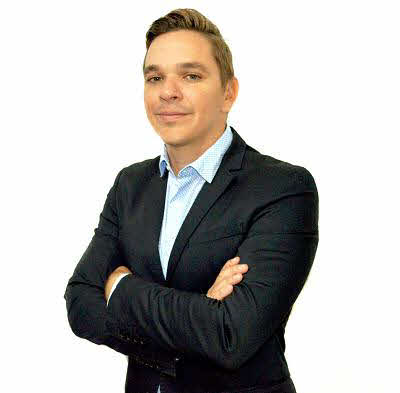Episode 358: Work Breakdown Structure for a Shipyard Project (Free)
This episode is sponsored by the PMP Exam Simulator:

The Work Breakdown Structure (WBS) is a powerful project management planning and controlling tool. It is the backbone to planning and managing scope on any project and - as you will hear in our interview - every ship repair project must have it.
Fernando Remolina González (https://www.linkedin.com/in/remolinaf) is a project management professional and works for the Curacao Drydock Company in ship repair, engineering and ship conversion. In his many years of working in shipyard project management he realized that managing the scope is both central and vital and that the WBS is the tool to use. And his successful projects are the proof.
So he set out to help others in his industry and wrote the article WBS for Ship Repair Projects. But here is the good news. First of all his article offers a fascinating look at shipbuilding project management and second, his review of how to apply and use a WBS can easily be applied to many other types of projects.
Episode Transcript
Below are the first few pages of the transcript. The complete transcript is available to Premium subscribers only.
Podcast Introduction
Cornelius Fichtner: Hello and welcome to Episode #358. This is The Project Management Podcast™ at www.pm-podcast.com and I'm Cornelius Fichtner. Before we start, please don’t forget that we are a listener supported podcast. If you enjoy our interviews, then please visit www.project-management-podcast.com/premium. Your subscription will help keep us going.
The Work Breakdown Structure (WBS) is a powerful project management planning and controlling tool. It is the backbone to planning and managing scope on any project, and as you will hear in our interview, every ship repair project must have it.
Are you PMP certified and want to earn 37 PDUs quickly and for less than $5 per hour? That’s no problem with the Agile Prepcast. It not only prepares you for your PMI-ACP Exam but also qualifies for a ton of PMP PDUs! Visit www.agileprepcast.com/pdu for the details.
Fernando Remolina (https://www.linkedin.com/in/remolinaf) is a project management professional and works for the Curacao Drydock Company in ship repair, engineering and ship conversion. In his many years of working in shipyard project management, he realized that managing the scope is both central and vital and that the WBS is the tool to use, –and his successful projects are the proof.
So he set out to help others in his industry and wrote the article “WBS for Ship Repair Projects”. But here is the good news: First of all his article offers a fascinating look at shipbuilding project management and second, his review of how to apply and use a WBS can easily be applied to many other types of projects and industries.
So let’s cast off. Enjoy the interview.
Podcast Interview
Female Voice: Project Management Podcast's feature interview: Today with Fernando Remolina, project manager at Curacao Drydock Company, project management author and public speaker.
Cornelius Fichtner: Hello, Fernando! Welcome to the program!
Fernando Remolina: Hi, Cornelius! Thank you for inviting me to this interview. For me, it’s a pleasure.
Cornelius Fichtner: Wonderful! Before we get started, let me ask you a fun question because, it’s in the Caribbean, it’s just north of Venezuela. What is it like to live in a paradise? Or at least what many of us who live on a big continent think, “Curacao that has to be a paradise!” What is it like to live there?
Fernando Remolina: Yeah. Well, Curacao is an island located in the Caribbean and it is part of the Netherlands Kingdom. Living here is like a never-ending vacation. The sun is always shining and in a few minutes of driving, you can get crystal clear water beaches and all kinds of restaurants. In general, Cornelius, it’s amazing.
Cornelius Fichtner: Okay. We are now all officially jealous.
Fernando Remolina: Yeah.
Cornelius Fichtner: Yeah. So the shipping services is one of the major industries, right?
Fernando Remolina: Yeah, right. Curacao has three major industries where ships are involved. Because Curacao is an island, normally all the goods are shipped by sea. So, it has a container port. On the other hand, the island also has a refinery where ships arrive for oil loading and unloading and of course, the last but not the least, we have the shipyard for ship repairs.
Cornelius Fichtner: And what prompted you to write an article about using a WBS, a Work Breakdown Structure for Ship Repair Projects? What was the reason for this?
Fernando Remolina: You know Cornelius, I have a personal mission in the ship repair industry. I have been working in this industry for almost 10 years and since five years ago when I got my PMP certification, I started to apply the PMI standard to my projects realizing that they were more organized, finishing on time and on budget.
I have worked for three different shipyards so far and none of them has used a recognized project management standard. But don’t get me wrong; they have set their own project management process, but probably all other shipyards in the world do so. My intention is to show the professionals who work in this industry that you can apply all the project management tools and have successful projects.
Cornelius Fichtner: Yeah. So to recap for everybody, would you please remind us: What is a WBS? What is a Work Breakdown Structure?
Fernando Remolina: Yes, of course. The PMBOK has a formal definition for the WBS. Up here, I want to bring forward also the definition from the author of the book “Secrets to Mastering the WBS in Real World Projects”, written by Liliana Buchtik. I want to mix both of them. So my mixed definition is: A WBS is a hierarchical decomposition that tells you what to deliver in the project; not the “when” or “how” to deliver.
So the “when” and the “how” are parts of the schedule, actually. The “how” are the activities and the task relationships, and the when is the activity durations in a time frame. So you need both of them, the “when” and the “how” to achieve the “what”, it is being the scope that you have in the WBS.
Cornelius Fichtner: OK, So it is very important to remember this fact that you also stressed out in your article; that WBS doesn’t tell us the “how” or the “when” of what we deliver. Why is that? Why doesn’t the WBS tell us that?
Above are the first few pages of the transcript. The complete PDF transcript is available to Premium subscribers only.
PDUs: Ways of Working, Project Scope Management, Podcast Episodes About WBS, Work Breakdown Structure, Shipyard Project Management
- Last updated on .

